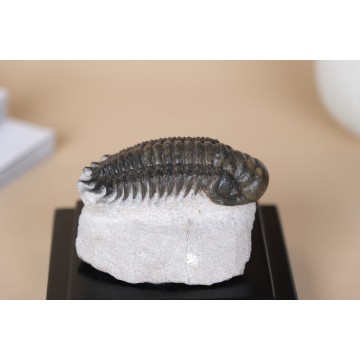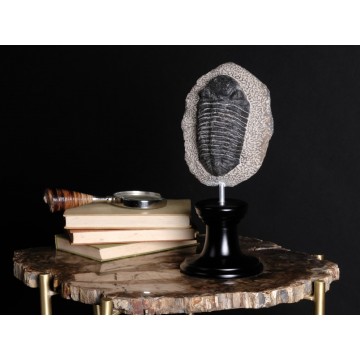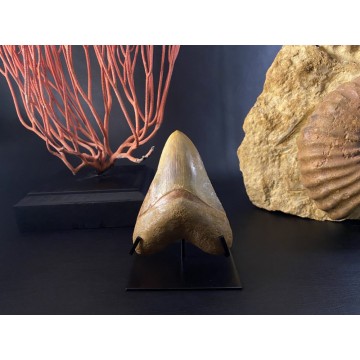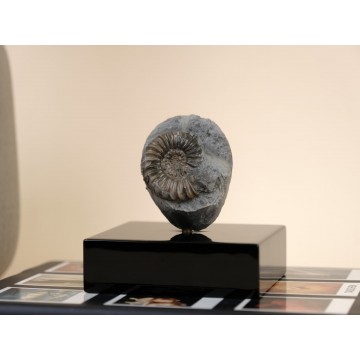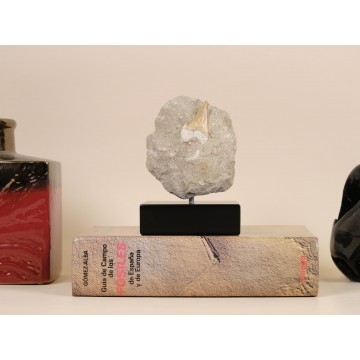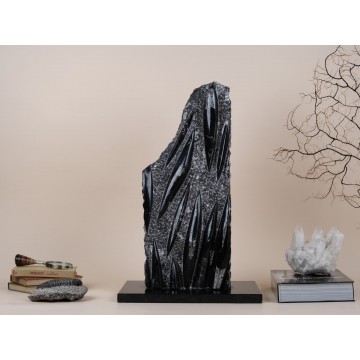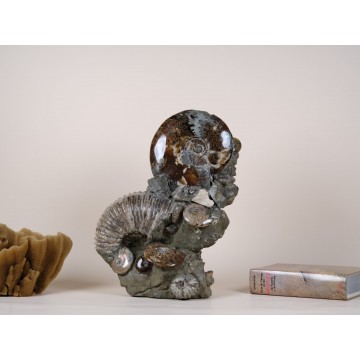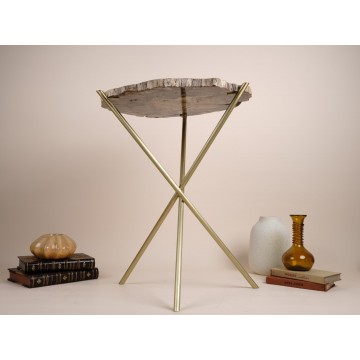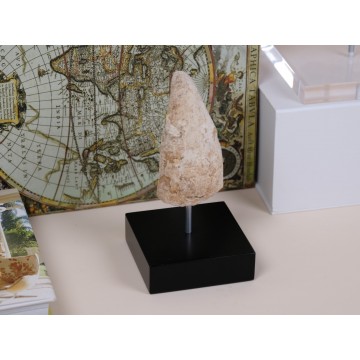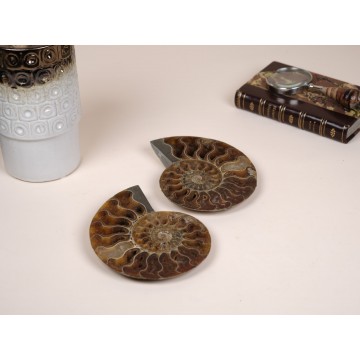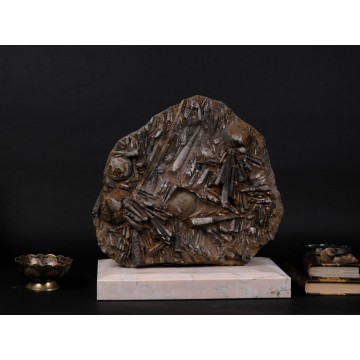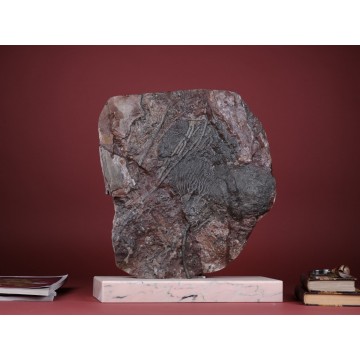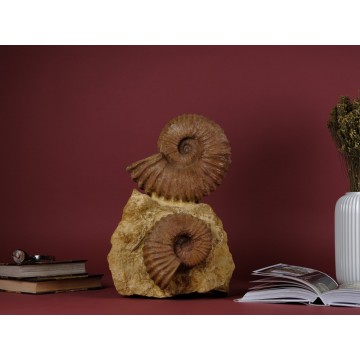Trilobite fossil
Crotalocephalus gibbus fossil Trilobite, a spectacular piece featuring a perfect dorsal view, still embedded in its original matrix. Skillfully prepared, this fossil is well preserved, 100% natural, and sandblasted with no restoration or added trilobite spines or paint.
Dating back to the Lower Devonian period, Landhar formation, Pragian stage (410 – 407 million years), this specimen was recovered from Aatchana, Errachidia Province, Morocco.
It is mounted on a black lacquered double wood base.


















